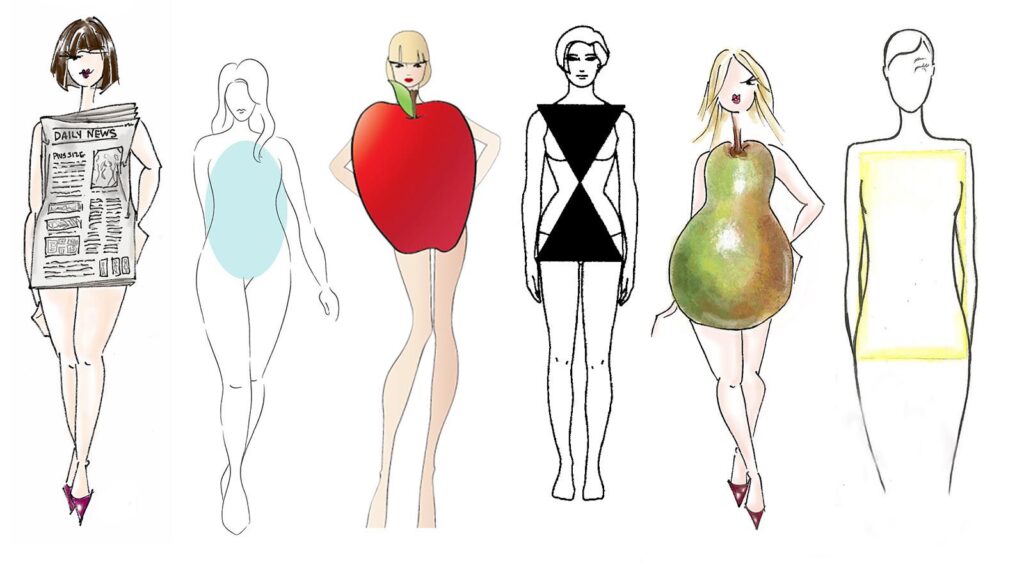If you’ve ever wondered what your body type reveals about your health, we’ve got some news for you. There are several different types of body types that can be used to determine if someone is at risk for certain diseases and conditions. Let’s take a look at each one:
Apple
Apple-shaped bodies are associated with a lower risk of heart disease and diabetes. This body type has been linked to healthy cholesterol levels, lower blood pressure, and a reduced risk of dementia.
Apple-shaped people tend to have large waists, hips, and thighs that can be compared to an apple or pear shape (think Kim Kardashian). The term “apple” comes from the fact that these individuals tend to keep their stomachs tucked in as much as possible—like hiding behind their arms when they eat dinner! But don’t worry: there are many health benefits associated with having this body type! For example:
- Apple-shaped people have higher HDL (high-density lipoprotein) cholesterol levels than other body types because they don’t store excess fat around their midsection as more pear-shaped folks do; instead, it flows into their bloodstream where it can be used by their liver for energy production instead of being stored away somewhere else such as around your organs or arteries leading down into them before eventually ending up leaking out somewhere else.
Pear
Pear-shaped bodies are also known as endomorphs. Pear shapes tend to have a higher risk of type 2 diabetes and heart disease, but they’re still considered to be healthy. Pear shapes tend to be heavier around the middle than at the hips, which makes them more susceptible to weight gain. This can lead to a variety of health problems like high blood pressure and diabetes if not managed properly.
To combat these issues, pear-shaped people should focus on cardio (such as running or walking) and strength training exercises like squats that emphasize lower body muscle groups like quads/hamstrings/calves instead of just upper body muscles like biceps and triceps when lifting weights with dumbbells or barbells (which will force you into a narrower build).
Ruler
As you can see, the ruler body type is characterized by a small waist, wide shoulders, and hips. The ruler’s frame tends to be shorter than the average height (5’7″ or shorter). He or she may have trouble finding clothes that fit well because of his/her narrow shoulders.
The Ruler has a high risk for heart disease, diabetes, and high blood pressure. They also tend to be heavier than other body types. In addition, this individual has an increased chance of being diagnosed with cancer compared to other people in their age range.
Hourglass
- Hourglass Body Type: This body type is associated with a higher risk of heart disease, diabetes, and osteoporosis.
- Hourglass Body Type: This body type is also associated with a lower risk of breast cancer.
Every body type is healthy.
Every body type is healthy.
If you’re having a hard time figuring out what your body type is, don’t worry! There’s no right or wrong way to be. Your health depends on your eating habits and exercise routine, not whether or not the scale says “healthy.” The best thing to do is focus on how you feel in general—whether it’s feeling like a pear with extra skin around the middle or if that apple shape makes you feel sluggish all day long. Everyone has different needs when it comes to their bodies, so don’t let anyone make assumptions about what kind of shape they should be in based on their size alone (or lack thereof). It takes time for our bodies to change over time; some people will have more dramatic changes than others but at least now we know where some common misconceptions come from!
Takeaway:
The takeaway from this article is that there are no good or bad bodies. Everybody has their own strengths and weaknesses, which can help you understand how to improve your health. A person who has a larger frame may be able to carry more weight than someone with a smaller frame, but this doesn’t necessarily mean that he or she is more healthy overall. It’s important for everyone to consider their own unique circumstances when making dietary changes or exercising regularly; if one person needs more iron in their diet than another because he works outside all day long and sweats through his shirt regularly (for example), then changing his diet should take into account his particular needs!
If you’re interested in learning more about body types, check out our article on the different types of people found throughout history!
Conclusion
The takeaway from all this is that your body type is a reflection of your health. If you’re worried about your body, talk to a healthcare professional who can help you make changes to reduce symptoms or prevent them in the first place.



